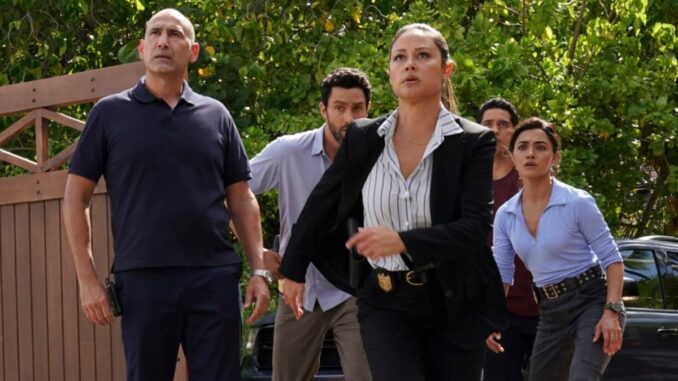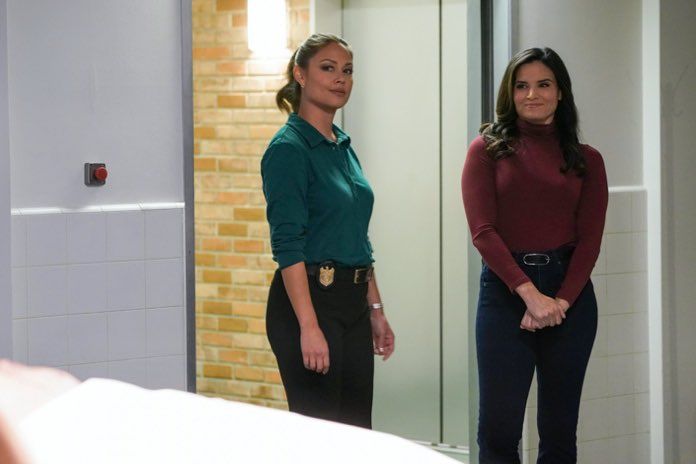
If you’ve ever watched NCIS: Hawai‘i, you know the action hits differently. The explosions feel bigger, the chases feel faster, and the tension feels real enough to grab you by the collar. But what actually goes into crafting these high-stakes sequences? Spoiler: it’s a blend of cinematic skill, careful coordination, and a lot of behind-the-scenes magic. Today, we’re diving deep into how the cast and crew create those pulse-pounding action scenes that keep viewers coming back every week.
The Art and Science Behind NCIS: Hawai‘i’s Action
Why Action Scenes Matter So Much
Action in NCIS: Hawai‘i isn’t just “for fun.” It drives the plot, defines the characters, and sets the show apart from other crime procedurals. Fans expect a certain level of intensity—and the creative team always delivers.
Grounding the Action in the Hawaiian Landscape
Using Hawai‘i as a Natural Film Set
Hawai‘i isn’t just a backdrop—it’s a character. The cliffs, beaches, jungles, and urban landscapes give action scenes a fresh, cinematic feel.
Real Locations, Real Stakes
Instead of relying heavily on green screens, the show films on real terrain, which means:
-
Authentic movement
-
Natural lighting
-
More dynamic camera work
You feel the heat, the wind, the danger—because the actors really do, too.
The Masterminds Behind the Mayhem
Expert Stunt Coordinators
Every action scene begins with the stunt team. They design sequences that look dangerous but are executed with extreme precision.
Blending Practical Stunts with Movie-Level Choreography
Stunts often mix:
-
Combat choreography
-
Tactical training
-
Mobility with weapons
-
Controlled falls
-
Vehicle maneuvers
It’s not just “running and shooting”—it’s performance art under pressure.
Training the Cast Like Real Agents
Tactical Training to Make Every Move Believable
Actors undergo:
-
Firearms training
-
Close-quarter combat rehearsals
-
Marine Corps-style drills
-
Movement training for tactical entry
This ensures scenes look realistic—and speeds up filming.
Character-Driven Action
Each character fights and moves differently:
-
Jane Tennant: strategic and grounded
-
Kai Holman: aggressive, fast, physical
-
Lucy Tara: agile and tactical
-
Jesse Boone: precise, experienced, steady
These distinct styles add depth to the action.
Cameras That Move Like the Actors
The Cinematography That Makes Every Scene Pop
The show uses:
-
Gimbal-stabilized rigs
-
Drones for sweeping overhead shots
-
Handheld cameras for gritty close-ups
-
High-frame-rate cameras for slow-motion explosions

This isn’t typical network-TV shooting—it’s action-film quality.
Turning Explosions Into Storytelling Tools
Practical Effects Over Digital Ones
Whenever possible, real explosions are used. Why?
Because real debris, heat waves, and shock effects can’t be faked perfectly.
Safety Is the Real Star
The FX team:
-
Builds controlled blast zones
-
Coordinates with stunt teams
-
Times blasts down to fractions of seconds
Actors often perform within a safe radius, making reactions genuinely authentic.
Vehicle Chases Done the Hawai‘i Way
Making Use of Hawai‘i’s Roads and Terrain
Chases weave through:
-
Cliffside highways
-
Narrow city streets
-
Off-road jungles
-
Coastal roads
These diverse landscapes force the crew to create unique chase styles.
Coordinating Multiple Vehicles
Chase scenes often require:
-
Precision drivers
-
Drone operators
-
Camera vehicles
-
Safety spotters
It’s a ballet—just with engines and adrenaline.
Marine and Naval Influence on Action
Consulting With Real Military Experts
Real NCIS agents and U.S. Navy specialists often advise on:
-
Protocol
-
Weapons handling
-
Tactical decisions
-
Interrogation scenes
Accuracy is a priority—not an afterthought.
Combat Scenes That Feel Personal
Emotional Stakes Elevate the Action
Action is never random. It’s tied to:
-
Character arcs
-
High-stakes decisions
-
Personal missions
-
Moral dilemmas
When the characters fight, it means something—and viewers feel that weight.
Close-Quarter Fights Done Right
The show excels at tight, intense brawls using:
-
Fast cuts
-
Low camera angles
-
Realistic grappling
-
Hand-to-hand techniques
These aren’t superhero fights—they’re messy, human, and dangerous.
Editing That Keeps the Heart Racing
Where the Real Magic Happens
The editing team blends:
-
Multiple camera angles
-
Real-time and slow-motion shots
-
Natural and dramatic lighting
-
Diegetic sound
The goal: make viewers feel like they’re inside the action.
Sound Design That Makes You Jump
Why Sound Is as Important as the Stunt Itself
Every punch, gunshot, footstep, and explosion is layered with:
-
Foley sound
-
Environmental audio
-
Low-frequency rumble
Together, they create that “immersive” NCIS: Hawai‘i signature sound.
How the Show Keeps Topping Itself
Raising the Bar Every Season
The team constantly:
-
Experiments with new stunt techniques
-
Integrates new tech
-
Searches for fresh filming locations
-
Improves tactical authenticity
They’re not just repeating formulas—they’re reinventing them.
Conclusion
NCIS: Hawai‘i delivers action that feels raw, real, and emotionally charged. From stunt choreography to real-world training, from cinematic camera work to the stunning Hawaiian landscapes, everything is designed to pull audiences into the scene. And that’s why each episode hits with the intensity of a full-length action film, even in a 45-minute runtime.
The magic isn’t just in the explosions—it’s in the teamwork, preparation, and passion behind every frame.
